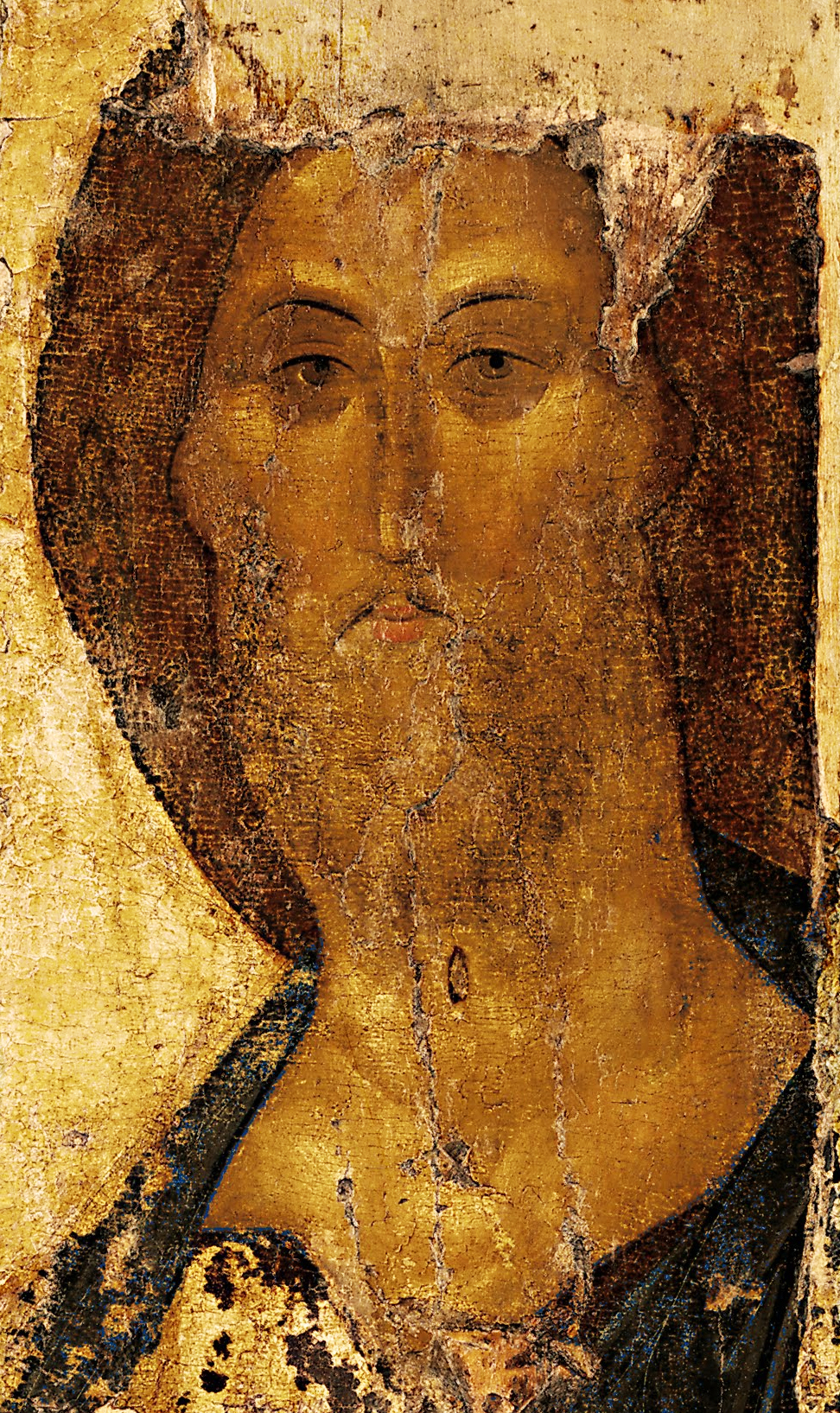
I'll lazily use this to re-post some of an older piece, Sufficient Unto Itself, adding to paintints by Andrei Rublev; below The Annunciation(1405), and above Christ the Redeemer(1410).
The world of consciousness is boundless, which is to say that there are not a finite amount of possible mental states to fit all circumstances. Each of these states, if we were to commit the error of isolating them into supposed distinct realities, is in itself real; such states being for example terror, wonder, sorrow, joy. The works of Homer would seem to operate within an heroic but ultimately rather crude universe of finite states covering the multitudes of experience, while we could say that Shakespeare represents something more like the boundlessness of consciousness and its measureless subtleties.
The human mind can conceive of imaginary physical realities, but this cannot be said of psychological/emotional states which if capable of conception must be real, as the mind cannot create beyond itself in these terms. That they can be experienced means they are real. If we allow ourselves a self as a reality, then this self moves within an infinite world of itself, or Self.
To now move to the world of art & in particular art of a religious nature. The essence of great art of this nature, such as Bach's Matthew's Passion, is not a religious world that it points towards; the music is itself religious. This music cannot simply be said to be about an idea that is religious, but which may not exist; it is an emanation of an interior reality of the mind that is itself religious.
Such great works are themselves the world, and of the world, they point towards. The psychological, emotional reality of the given Rublev images is itself spiritual- the choice of colours, the manner of line, the whole inner essence. To stress, they are not about a projected spiritual dimension, an intellectual idea; this spiritual reality is the very nature of their existence within the world of consciousness. If you removed all knowledge of the context of the paintings, the significant inner substance would still remain. The truth here is not a matter of what the paintings are about, but what they are; and by extension the inner reality from which they are produced and with which they resonate.

And just for the hell of it, from a more prosaic sense of spirituality, Spring Outing of the Tang Court by Zhang Xuan (713-755 AD), showing the wonderful tonal simplicity of much of Far Eastern painting and music.


No comments:
Post a Comment